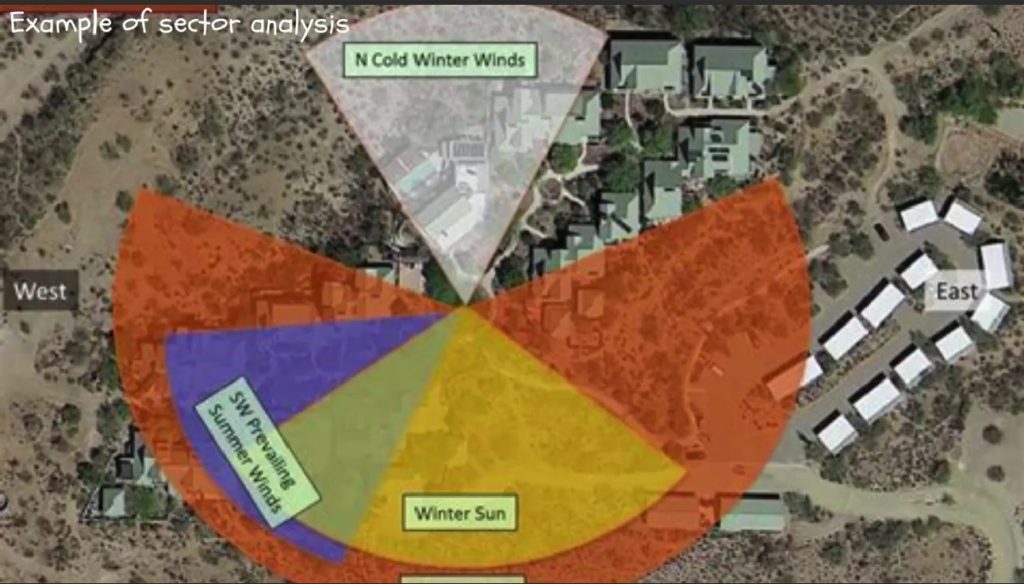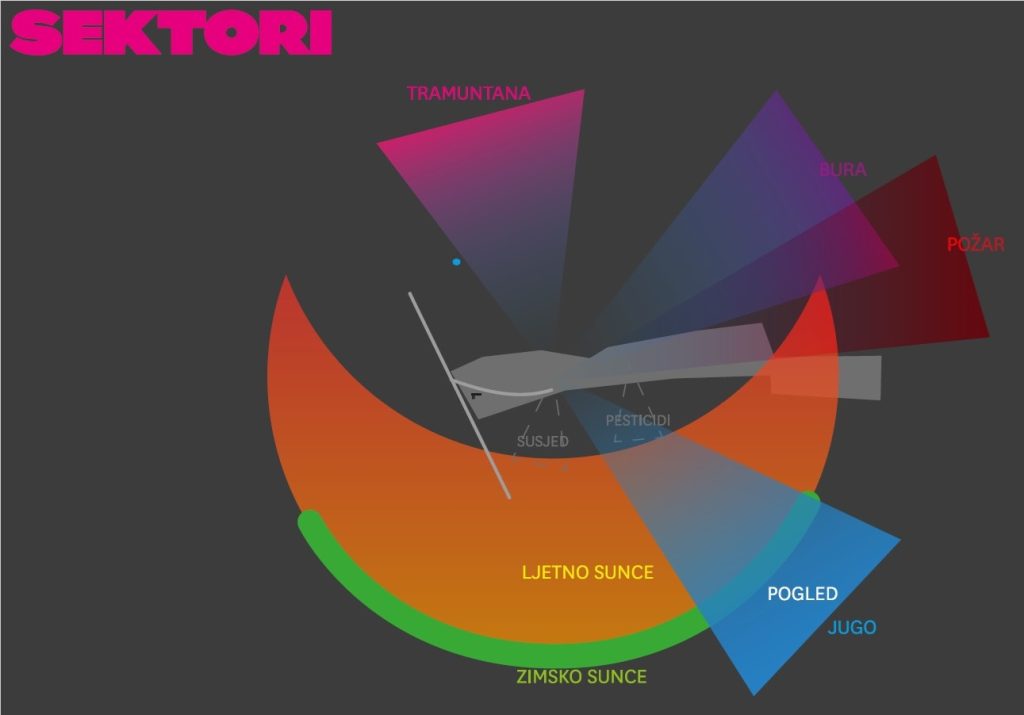Duration: 2 sessions of 45 minutes
It is important to conduct sector analysis before starting the design process. This will help us better understand the space we are designing and provide effective solutions that align with our wishes and needs.
Sectoral analysis is a tool used in permaculture to gather information for design. It is complemented by other analytical procedures, such as analyzing the 5 elements mentioned in the previous lesson. These procedures provide additional information about how natural and social phenomena influence the space we want to design.
Before conducting the sector analysis, we need to choose a reference point in space (or a specific, not too large area) for the analysis. If necessary, we can conduct the analysis for multiple points in space for the specific area we are designing.
Starting from the chosen point, we observe all external influences acting on it. These influences are crucial because they impact the future use of the area. We consider influences from all directions, covering a full circle of 360 degrees around the reference point. The influences themselves can originate from one or more directions, or from a wider area.
We record these influences and often visually display them as lines or segments of a circle in the part of the circle from which they affect the observed area.

Please take note of the following influences:

Keep in mind that sectors of influence encompass all external influences that intersect the observed space, such as a road or a stream.
It’s important to understand the desired usage of the space and the necessary conditions in order to effectively utilize the information obtained through sector analysis.
We seek to embrace positive influences and leverage their beneficial traits by removing obstacles that may hinder their impact. Conversely, we aim to diminish or eliminate negative influences by introducing design elements that hinder their effect.
Sector analysis assists us in determining the location and type of design elements needed in the space.

Conducting a sector analysis that provides a clear visual presentation of the anticipated impacts on a specific area we are designing, whether they are desirable or undesirable.
When conducting a sectoral analysis, we can do it in the classroom or out in the field that we are analyzing.
In the field, we use all our senses—sight, hearing, smell, and touch—as well as information from sources like the Internet, various applications, or literature such as atlases, encyclopedias, and maps. Additionally, people familiar with the terrain can provide valuable information.
To start the exercise, we introduce the concept and purpose of sector analysis to the students and explain the task—identifying and mapping sectors in the chosen terrain.
Here you can find nuggets that can help you implement the lesson.